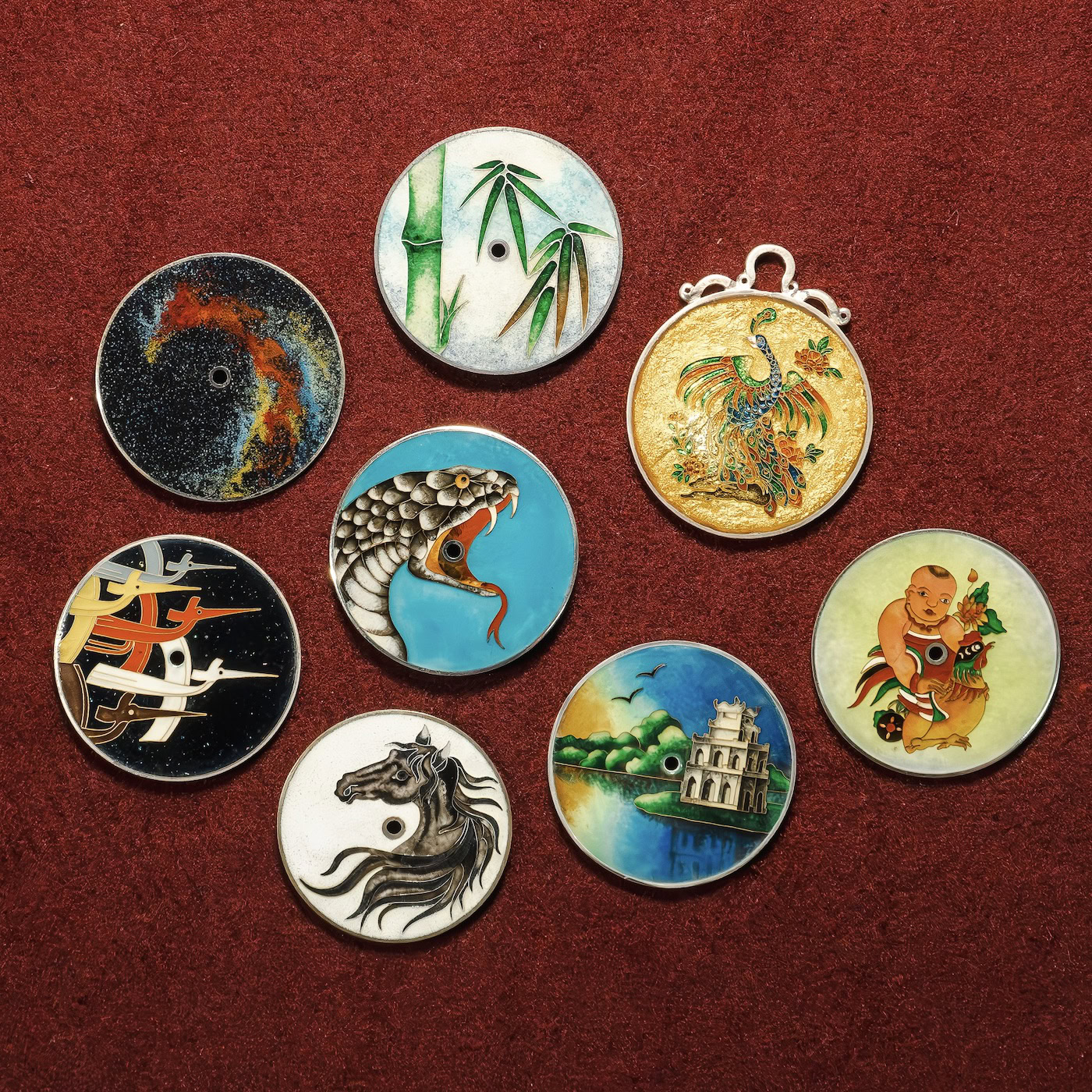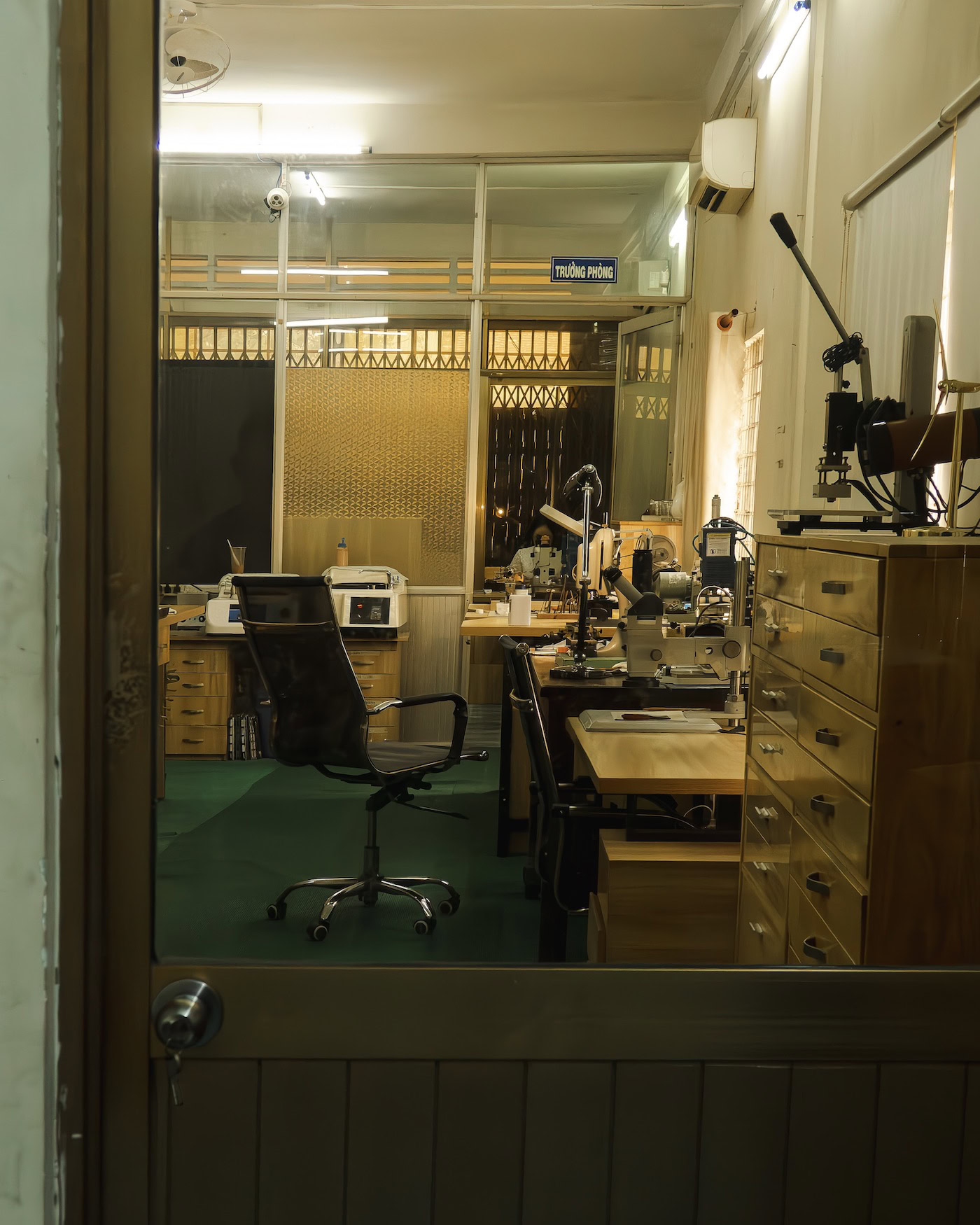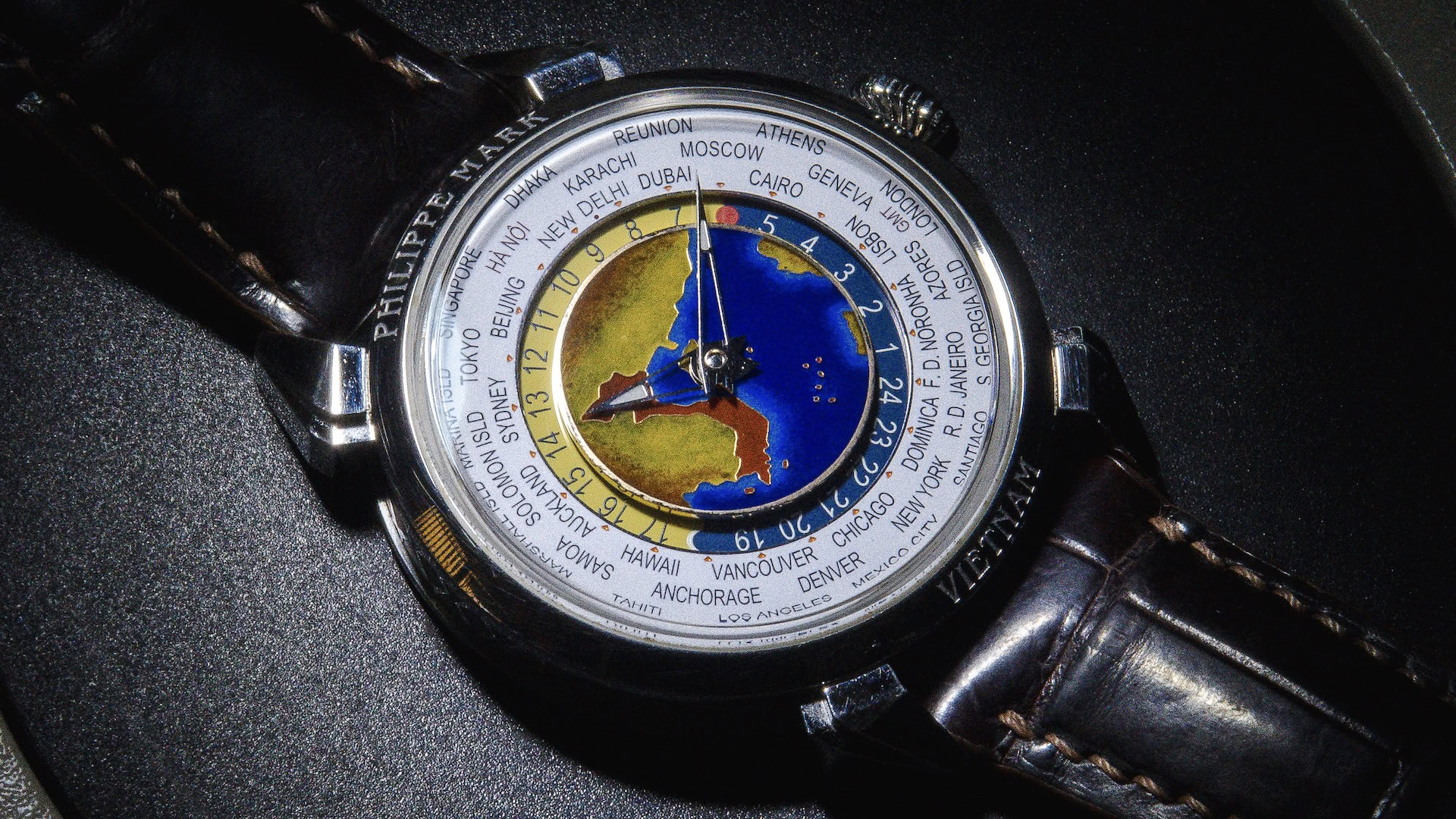Editor’s Note: This story originally appeared in Volume 5 of B.H. Magazine. To get your copy (and access to future issues), subscribe here.
(Photos by Nick Kenyon)
It’s 4:15 AM and I’m riding my scooter through the pre-dawn streets of Ho Chi Minh City. For a city home to nearly 10 million people, it feels eerily still – just me, the hum of my 155cc engine, and the occasional delivery truck cutting through the dark.
Illuminated on Google Maps is Long Xuyên, roughly a four-hour ride away, including a ferry across the Mekong River. But this isn’t a casual road trip – I am on my way to meet Philippe Le (Lê Nguyên Hoàng Anh Duy), one of the only independent artisans still crafting cloisonné enamel watch dials by hand.
In the world of haute horology, the cloisonné enamel process involves fusing extremely fine gold wires to a dial surface to create the outlines of a pre-sketched design, with the different sections of the design forming compartments (cloisons). These compartments are then filled with enamel and repeatedly fired in a furnace until deep colours are formed, bringing the design to life.

Every time the dial enters the furnace, there’s a risk of the dial cracking, and each dial may be fired 20 or 30 times, which results in an extremely high failure rate. Why would anyone endure such a painstaking process, you might ask? The wonder of enamel dials lies in the permanence of their colour, their resistance to rust or degradation over time, and the breathtaking beauty in their compositions.
Big watchmaking names like Patek Philippe and Vacheron Constantin are among those still carrying the torch of this near-extinguished art form, but as modern watchmaking techniques have evolved, the craft of enamelling has all but disappeared from existence, making them rare and highly collectable.
Today, the only enamel dial watches you’re likely to see will be produced by those at the pinnacle of Swiss, German, and Japanese watchmaking. So to have come across an enamel workshop so close to my home in Saigon was an opportunity I couldn’t miss.


With a professional background in architecture and engineering, Philippe Le first took up enamelling as a hobby, but as a watch collector, it wasn’t long before he decided to turn his pastime into a new profession, and he began establishing his enamel workshop with the help of some friends.
I’ve been lucky enough to tour a handful of Swiss watchmaking facilities, with the larger brands resembling scientific laboratories, and the smaller operators infused with the romance of their surroundings – be it ancient Genevan buildings or gently swaying Japanese red cedar trees. Le’s workshop enjoys neither, with Long Xuyên offering the kind of charm you’d find in a Newcastle industrial complex, and his studio located within an unassuming commercial building next to an unremarkable cafe.
The romance of Le’s operation isn’t found in its rural setting– it’s found on his workbenches. Filled with decades-old tools, cabinets brimming with rare watch parts, and shelves groaning under the weight of colour-coded enamel powder, the workshop is a space that promises quiet concentration as the enamellers hunch over their tasks, bending solid-gold wire into shape, delicately applying enamel paste to dials, and checking for imperfections under microscopes.
“I began studying the craft of enamel dials around ten years ago,” Le tells me, through his translator. “Vietnam has a history of enamel painting (known as pháp lam), but the techniques and quality were not that high. I wanted to see if I could adopt this Vietnamese style of enamel painting, but at a very high level, so I can share our culture with the world.”


Le’s operation is centred around a team of enamellers and watchmakers whom he has trained in the craft, with his two watch brands – Philippe Mark and MarkLE – sourcing Swiss-made movements from reputable suppliers like Schwarz Etienne and Sellita. Third parties might provide the movements, but almost everything else is designed in-house, including the cases, hands, straps, and, of course, cloisonné enamel dials.
“It took me two years to create enamel works of a decent quality, because it requires a lot of practice to understand the things that can change the outcome of the final work,” says Le. “At that point, I was almost ready to give up, but I loved it so much that I didn’t want to stop.”
Even after a decade of expertise, the failure rate of creating enamel dials remains high, with Le explaining that only 20 per cent of dials pass his quality control. Beyond obvious failures like cracks, Le has a 13-point checklist that every dial needs to pass, including colour quality, microscopic air bubble inclusion, dial flatness, among many others.
Le reaches into a drawer under his desk and pulls out a stack of paper forms at least two inches thick, each representing a dial that failed to pass inspection.
“In the last few years, the team and I have reached a level of precision and quality that we can confidently sell our watches to clients around the world,” says Le.
Presently, there are two ways that Le offers his cloisonnéenamel dials to clients. They can select one of the dozen or so existing designs he has created, or they can order an entirely bespoke dial of their own design. Prices vary significantly between the two programs, with existing designs beginning around $3,000 and custom dials priced from $7,000.


After a client submits a request for a bespoke creation, Le will personally create half a dozen or so watercolour paintings in varied styles as inspiration for the final design, after which he’ll discuss with the client what direction they like best. The designs go through multiple iterations before an exact form and colour palette is agreed upon, and then Le will begin the manufacturing process, often creating multiple prototypes as he hones in on the perfect mix of enamel powder, trips to the furnace, and other quality control.
Le has both local Vietnamese and global clients – his most recent work was a bespoke dial for an American client that depicted a lion. The depth of his labour is obvious, with four different lion dials scattered amongst other rejected dials on the tray on his desk, all of which failed to meet his strict controls.
When you include the design process, prototyping, and production of each bespoke dial, the cloisonné enamel process can take months for a single project to be completed. For an idea of the complexity of creating each dial, a design in his existing collection, Ba Trieu Riding an Elephant, features around 100 pieces of golden wire that have been bent into different shapes to create the design.
Not only are Le and his team reviving an art form that was almost lost to time, but they are doing it from a rural city in Southern Vietnam, to a standard that rivals some of the best dials I’ve seen from luxury watchmakers in Europe. In a world that feels increasingly synthetic – from AI-generated content to the planned obsolescence in almost every product we interact with – Le is returning to slow craft, to quality above all else, and an uncompromising commitment to preserve one of history’s most beautiful artistic techniques.
If you’ve enjoyed this story about Vietnamese cloisonné enamel dials, consider a few more of our favourite stories – direct from the pages of B.H. Magazine:
- Adrien Brody Is Human After All
- Derek Guy Has Entered The Chat
- The True Cost Of Luxury: Confessions Of A Restaurant Critic
- The Story Of ‘Eastern Brown’: Designing The B.H. 911 Carrera GTS Cabriolet
- The Empire Steps Back: Western Diplomacy In The Trump Era
- Cam Green On Mindset, Motivation, & Why He Joined Rado’s Ranks

